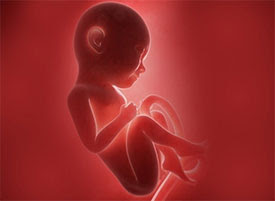Googling the ghosts of Montparnasse cemetery by Hugh Schofield
Paris is well-known for its cemeteries, the most famous being Pere Lachaise, where tourists seek out the tomb of Oscar Wilde. But I live next to another great 19th Century cemetery in Montparnasse - and when I go there I always take my phone.
It is funny how we love a graveyard.
You would think we would find contemplation of all that decomposition and mortality to be off-putting, but we do not. Or at least I do not.
It is funny how we love a graveyard.
You would think we would find contemplation of all that decomposition and mortality to be off-putting, but we do not. Or at least I do not.
Over the last 10 years I have become an aficionado of the pathways and sculptures and chapels and memorials of my local, Montparnasse cemetery.
By now I know all the famous graves - Serge Gainsbourg, the singer and poet, his slab covered with flowers and metro tickets left by fans in reference to one of his best-known songs.
Tombs re-used
Near the northern gate, the shared tomb of Jean-Paul Sartre and Simone de Beauvoir, with always a piece or two of folded paper. Words of devotion from some earnest admirer, often in Japanese for some reason.
Charles Baudelaire and Guy de Maupassant, the photographer Man Ray and the chess grandmaster Alekhine, Samuel Beckett, Susan Sontag, Jean Seberg...
It is very regimented, in a way that official things so often are in France.
The ground is divided into 30 "divisions" and there are uniformed attendants who blow whistles and hustle everyone out at closing time.
Lines of watering cans attest to the fact that this is very much a (excuse the pun) "living" cemetery, with 1,000 new burials every year, as old abandoned tombs are emptied and re-used. So much for the pious hope, everywhere engraved - "plot granted in perpetuity".
Anyway, it is a lovely restful place, all the more welcome for being at the heart of a busy metropolis. And now I have discovered a new reason to visit - the smartphone.
By which I mean, the possibility offered by any internet-capable hand-held device to serve up the most extraordinary array of instant, fascinating information about people - dead people - who we would otherwise totally ignore.
Ghosts of the past
Thanks to technology, these obscure ghosts are getting a new chance at "perpetuity".
The other day I passed a tomb graced with a simple French tricolour. A soldier, dead in 1914, name of Marie-Joseph Bridoux.
Never heard of him?
No-one has. But it turns out, thanks to a quick internet search, that he was the first French general to die fighting the Germans in World War I, just a few weeks after its outbreak.
Not only that, we learn that his son Eugene was later war minister in the pro-German Vichy government in World War II, and that his grandson, also called Eugene, was a Sturmbannfuhrer in the French division of the Waffen-SS.
There, in a single family, is a glimpse of how what began as patriotism was transformed between the wars into demoralisation and betrayal.
A short walk away, coincidentally, I come across the tomb of the lady they used to call Madame la Marechale. Nothing to mark it out, but this is the wife of the Vichy leader Philippe Petain.
He was a notorious philanderer as a younger man, and she, also quite sexually forward, went by the glorious name of Nini Hardon. She was loyal to him to the end.
Click on a link to the French national archives and you can see footage of her, a rather severe lady, tweedy but still busty, visiting her disgraced husband in prison on the Ile d'Yeu. She died in 1962.
Stumbling through a forgotten corner, I find a small blackened tombstone bearing the family name of France's famous ex-prime minister Dominique de Villepin, and on the very same tombstone the name of Britain's famous ex-prime minister Blair.
It turns out, I discover on a genealogy website, that the de Villepin family, vaguely aristocratic, is descended in one branch from the Scottish Barons Blair of Balthayock in Perthshire. Any relation?
'The Kiss'
Over here, a stylised sculpture, a cube of stone fashioned to represent two people embracing. Below it a tombstone and hidden in ivy an old, old photograph of a young woman. The writing on the stone is Cyrillic and almost worn away, but a quick search tells the story.
This is the grave of one Tania Rachevskaia, a Russian anarchist who committed suicide for love in 1908.
The sculpture is "The Kiss" by her friend the Romanian Constantin Brancusi, himself buried in another division in the cemetery. Apparently, the sculpture is very famous - and, oh yes, only now do I spot the security cameras.
Here is a man called Charles Cros, long-forgotten, but he once invented something called the paleophone. It was exactly the same as the gramophone, but the year was 1877 and Thomas Edison had just taken out the patent.
And over here a newish tomb, someone called Maurice Kriegel-Valrimont.
He was one of the French Resistance men who took the surrender of the German army in Paris in August 1944. Come to think of it, I interviewed him on the 60th anniversary and wrote it up for the BBC News website.
Ah yes, here it is on my phone. Marvellous seeing your old stuff again.






















No comments